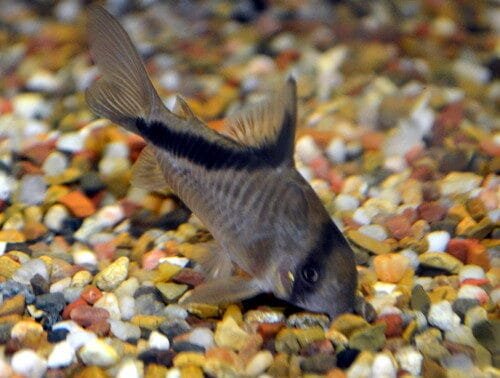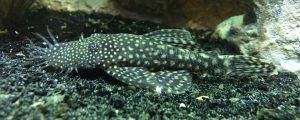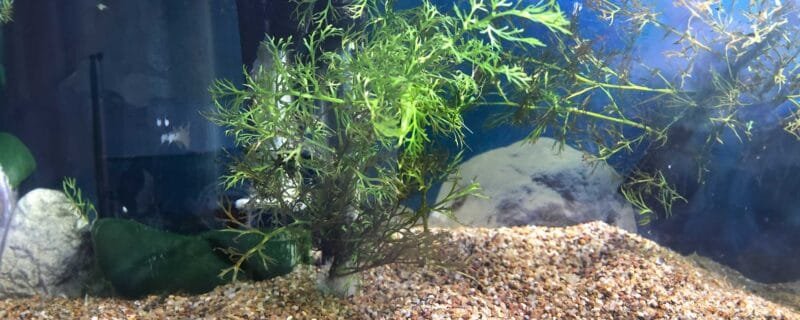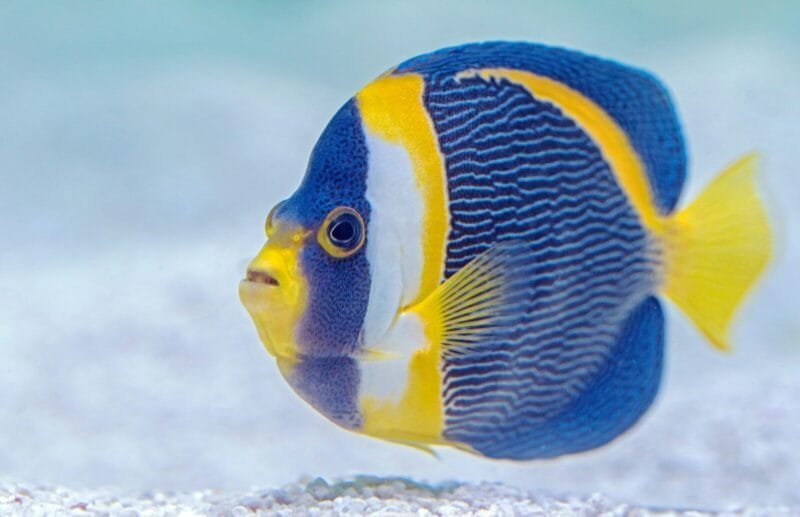The Cuckoo Catfish (Synodontis multipunctatus) is one of the most intriguing freshwater fish from Africa’s Lake Tanganyika. Belonging to the Mochokidae family, this species has earned its common name from its unusual breeding behavior, which mimics the brood parasitism of the cuckoo bird. Known for its energetic nature, spotted body pattern, and symbiotic relationship with African cichlids, the Cuckoo Catfish has become a fascinating addition to many advanced aquariums.
Native Habitat
Synodontis multipunctatus is native to the deep, rocky waters of Lake Tanganyika, which borders Tanzania, the Democratic Republic of Congo, Burundi, and Zambia. The lake’s alkaline environment and stable temperatures have shaped this catfish’s adaptations, making it best suited to well-oxygenated, hard water aquariums that mirror these natural conditions. In the wild, they can be found at depths of up to 40 meters, often in rocky crevices or near cichlid colonies.
Size and Appearance
The Cuckoo Catfish grows to an average size of 15–20 cm (6–8 inches) in captivity, though wild specimens can be slightly larger. Its body is covered in a beautiful array of dark brown or black spots on a light beige background. It features three pairs of barbels around its mouth, which it uses to locate food in low-light conditions. Its broad dorsal and pectoral fins are often edged with dark bands, adding to its attractive appearance.
Diet and Feeding
In the wild, the Cuckoo Catfish is an omnivore, feeding on insects, crustaceans, mollusks, and organic debris. In the aquarium, it readily accepts a varied diet that includes sinking pellets, frozen bloodworms, brine shrimp, and high-quality catfish wafers. Supplementing with fresh vegetables such as zucchini or cucumber slices can enhance their digestion and mimic their natural foraging behavior. Feeding them after lights out often yields the best results, as they are more active during the night.
Sexing and Breeding
Sexing Synodontis multipunctatus can be challenging because males and females have similar coloration and shape. Males tend to be slimmer with a slightly more pointed genital papilla, while females are rounder when full of eggs.
Unique Breeding Behavior
What makes this species truly extraordinary is its brood parasitism. The Cuckoo Catfish lays its eggs during the spawning of certain African cichlids, such as those from the Mbuna Cichlid groups. The unsuspecting cichlid then collects both her own eggs and the catfish’s eggs into her mouth for incubation. The catfish eggs hatch first, and the fry consume the cichlid’s eggs within her mouth—hence the “cuckoo” name. This incredible survival strategy is one of the few known examples of fish exhibiting parasitic breeding behavior.
Tank Setup and Water Conditions
Since they originate from Lake Tanganyika, Cuckoo Catfish thrive in alkaline, hard water conditions with high oxygen levels and minimal fluctuations. Here are the optimal parameters:
Ideal Water Parameters
- Temperature: 24–28°C (75–82°F)
- pH: 7.8–9.0
- Hardness: 10–20 dGH
- Tank size: minimum 55 gallons for a small group
Use sand or smooth gravel substrate to prevent damage to their delicate barbels. Rock formations, caves, and hiding spots are essential, as these catfish enjoy resting in dark crevices during the day. Efficient filtration and moderate water flow mimic their natural lake environment, keeping them healthy and active.
Temperament and Compatibility
Cuckoo Catfish are peaceful yet lively and make excellent companions for robust African cichlids, particularly from Lake Tanganyika or Lake Malawi. They prefer to be kept in groups of at least 3–6 individuals, as they display more natural schooling behavior and reduced stress when in groups. Avoid pairing them with overly small or timid fish, as their energetic behavior might cause distress.
Compatible species include:
- Blue Zebra Cichlids
- Taiwanese Cichlid
- Shell Dwellers (Neolamprologus multifasciatus)
- Denison Barbs
- Other Tanganyikan cichlids with similar water requirements
Ease of Care
Synodontis multipunctatus is rated as moderate in difficulty. While hardy and adaptable, they require stable water conditions, ample hiding spaces, and a compatible tank community. Regular water changes and monitoring of nitrate levels are essential. Their playful nature and resilience make them a rewarding species for aquarists experienced with African cichlids or large community setups.
Species Variations and Albino Form
There are minor geographical variations in coloration among populations of Synodontis multipunctatus within Lake Tanganyika. Some exhibit larger spots or slightly different shading. The Albino Cuckoo Catfish is a rare and striking variant, featuring a pale cream body with pinkish eyes and subtle golden spotting. While less common, the albino variety shares the same care requirements and behavior as the standard form, making it an equally fascinating addition to the aquarium.
Interesting Facts
- Synodontis multipunctatus is the only known catfish species to practice brood parasitism.
- They can live up to 15 years in captivity with proper care.
- They produce audible clicking sounds, especially when handled or during feeding.
FAQs About Synodontis multipunctatus
1. Can Cuckoo Catfish live with non-cichlid fish?
They can coexist with other robust community fish, but they are best kept with cichlids from similar environments due to their water chemistry needs and active behavior.
2. How many Cuckoo Catfish should be kept together?
It’s best to keep them in groups of at least three. They are social fish and show more natural, confident behavior when in groups.
3. Are Cuckoo Catfish suitable for planted tanks?
They can be housed in planted tanks with hardy plants like Anubias barteri or Amazon Swords, provided the substrate and decor are arranged to protect roots from their foraging behavior.
Conclusion
The Cuckoo Catfish (Synodontis multipunctatus) is a captivating species that brings both personality and intrigue to freshwater aquariums. Its striking pattern, active nature, and remarkable breeding behavior make it a conversation piece for any aquarist. With the right setup, stable water conditions, and compatible tankmates, this African catfish will thrive and provide endless fascination for years to come.






